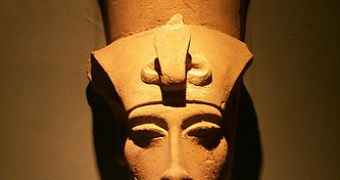Akhenaten, meaning Effective spirit of Aten in ancient Egyptian, was the Pharaoh of Egypt somewhere between 1353 and 1336 BC or 1351 and 1334 BC - the date is uncertain due to Egyptian chronology debates. He was especially known for trying to impose a monotheistic religion in Egypt, worshiping the Egyptian God Aten, and for his Great Royal Wife Nefertiti, who was made famous by a molded and painted bust, currently being displayed at the Altes Museum.
No mummy of Akhenaten was ever found, although sculptures of his face exist in museums throughout the world, showing feminine characteristics that could be associated with an unusual genetic mutation, involving the aromatose excess syndrome and craniosynostosis gene defects.
Professor Irwin Braverman from the Yale School of Medicine presented this new theory at this year's annual Historical Clinicopathological Conference taking place at the University of Maryland Medical School. Akhenaten ruled during Egypt's 18th Dynasty and fathered six daughters and possibly two sons together with Nefertiti. The sculptures regularly depict him as having a thin neck, elongated head, breasts and a prominent belly, which would suggest some kind of pregnancy.
Braverman says that his theory could be explained if genetic investigations were made on the remnants of Akhenaten's closest relatives. "DNA taken from the bone marrow could reveal the presence of the gene defects", Braverman explained.
The aromatose excess syndrome manifests itself by shaping feminine features in men. In women, the gene controlling it is responsible for the early sexual development, which would also explain why his daughters are depicted with breasts at very early ages.
The shape of Akhenaten's head, Braverman says, may be the result of a defect in the gene controlling craniosynostosis. The mutation of this gene may have triggered the fusing of fibrous joints in the head, causing it to develop abnormally. Several of his relatives, including famous Pharaoh Tutankhamun, seem to have suffered from the effects of similar genetic defects.

 14 DAY TRIAL //
14 DAY TRIAL //